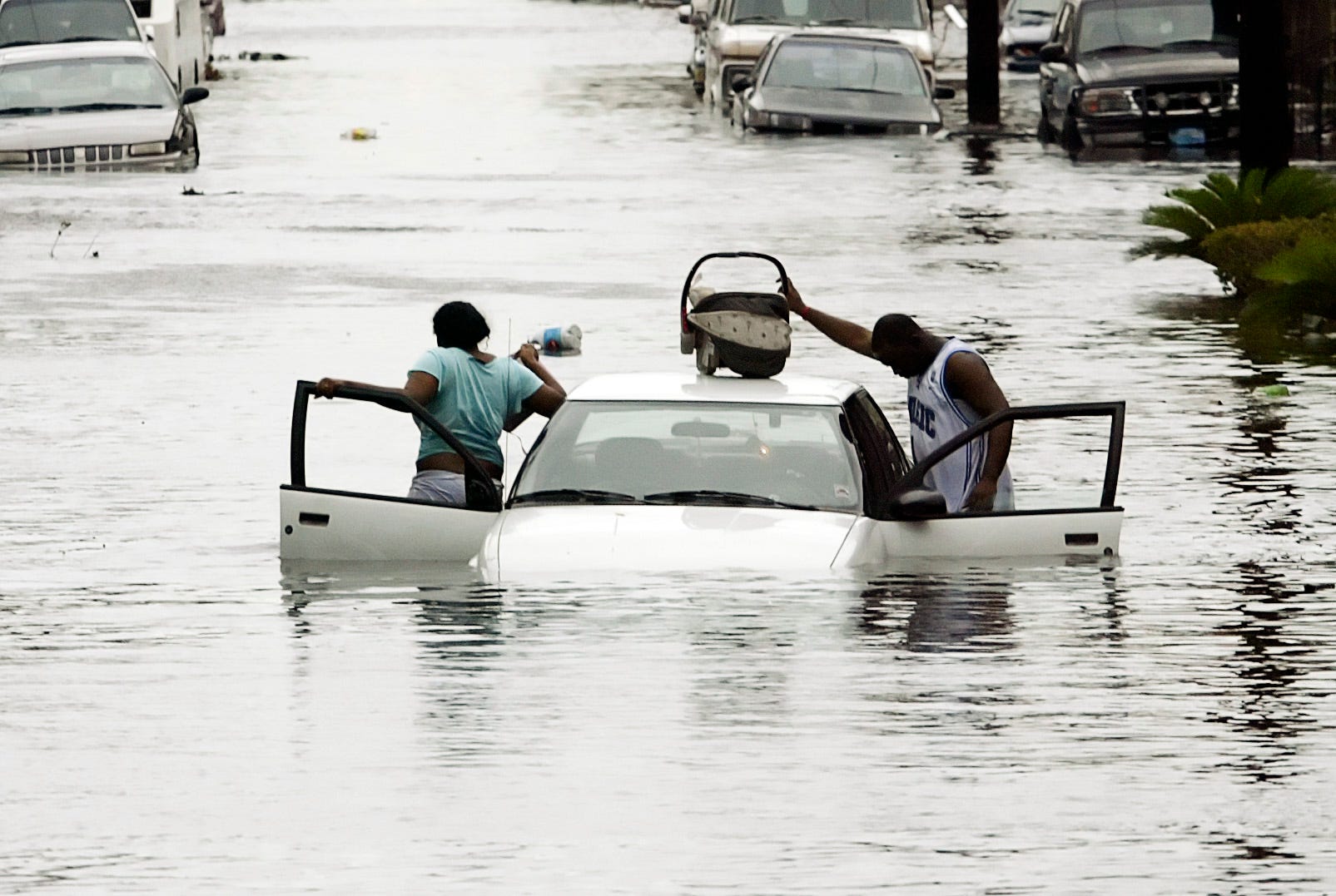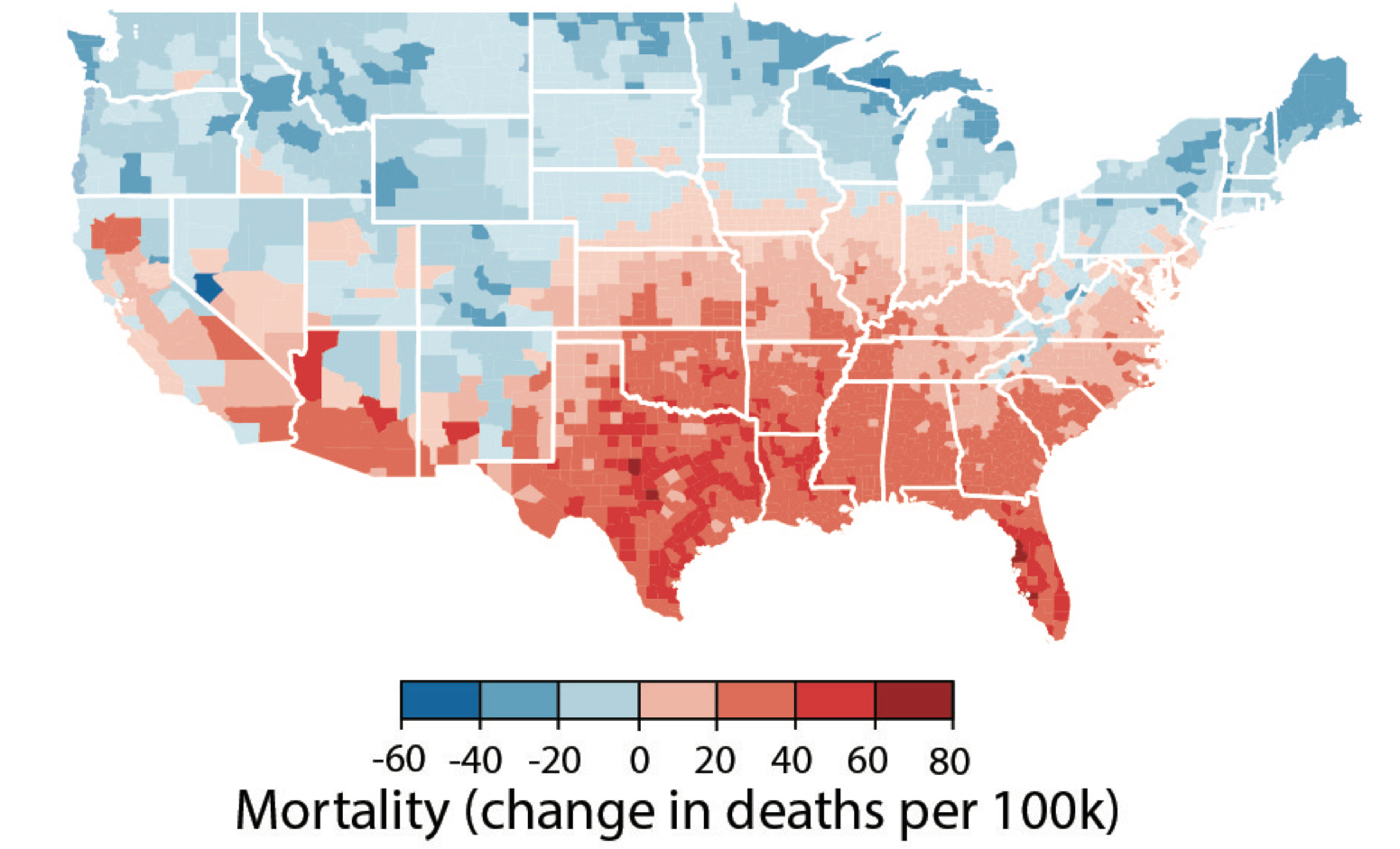Changing temperatures will likely cause mortality rates to climb in these parts of the US

REUTERS/Rick Wilking
An estimated 1,800+ people died in Hurricane Katrina in the south, however there isn't an official death toll. A man puts his baby on top of his car as he and a woman abandon their car after it started to float in New Orleans. Hurricane Katrina hit the Treme area of New Orleans August 29, 2005.
The report's authors calculated the expected change in mortality by county across the US, and found the risks are distributed very unevenly.
Their analysis suggests that for every degree Celsius the temperature rises, the country as a whole could see about 5.4 more deaths per 100,000 people. But the south is expected to be hardest hit, with many counties in Texas and Florida seeing between 20 and 40 more deaths per every 100,000 residents by the end of the century.
"There are going to be as many additional deaths from climate change as there are car crashes, and possibly more," James Rising of the University of California Berkeley, co-author of the report, told Axios. "Of the sectors we looked at, the greatest costs by far to society are going to come from those additional deaths."
That increase in mortality is due to several factors related to climate change - a 2012 report by the Climate Vulnerability Monitor cited flooding, heat waves, wildfires, and crop shortages as primary risk factors.
Unlike the negative impacts on the south and lower midwest, northern counties along the East Coast and Pacific Northwest could benefit from warming temperatures and see lower mortality rates, since temperatures there would become less cold.
Hsiang, Kopp, Jina, Rising, et al, Science, 2017 Mortality rates due to climate change by county in the US
According to the New York Times, the researchers behind the new report based their analysis on existing climate science and economic data, and scaled global climate models down to county-levels to obtain their results.
They concluded that rising mortality rates are far from the only way the South is expected to suffer. According to the report, the area will also see energy expenditures (due to heat) rise, agriculture yields fall, and weather damage costs spike in coastal regions. Ultimately, the report concludes the South will bear the brunt of the economic costs of climate change overall.
"Past models had only looked at the United States as a single region," said Robert E. Kopp, a climate scientist at Rutgers and a lead author of the study, told the New York Times. Those models "missed this entire story of how climate change would create this large transfer of wealth between states."
An interactive map of temperatures and emissions based on the report is available here.
 There's terror threat to T20 World Cup, reveals Trinidad PM; ICC says robust security plan in place
There's terror threat to T20 World Cup, reveals Trinidad PM; ICC says robust security plan in place
 Top tourist places to visit in Shillong in 2024
Top tourist places to visit in Shillong in 2024
 Worldwide tablet shipments grow in Q1 2024 after two years of decline
Worldwide tablet shipments grow in Q1 2024 after two years of decline
 Asus ZenBook Duo review – an excellent dual-screen laptop for multitaskers
Asus ZenBook Duo review – an excellent dual-screen laptop for multitaskers
 Paytm shares decline 5, hit lower circuit as COO Bhavesh Gupta resigns
Paytm shares decline 5, hit lower circuit as COO Bhavesh Gupta resigns

 Next Story
Next Story


